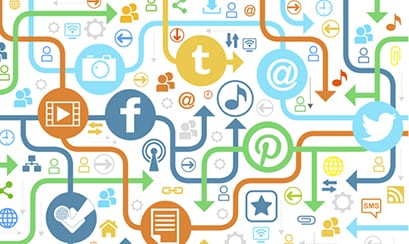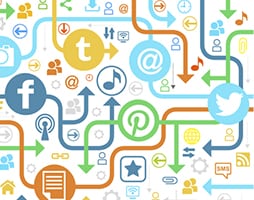
As a PR professional this might sound familiar: You’re launching a new service or product, and despite doing the legwork and research to assemble your PR and marketing campaign, you missed your target audience in the end. Consumer and market reactions went through a volatile shift overnight, and though the reason was out of your control, you’re now expected to adjust and make up for lost time. Successful PR campaigns require a detailed understanding of an industry and careful listening and analytical skills to anticipate consumers’ reactions to any announcement, and to develop the strategies needed to reach the right audiences. Still, we’ve all had a moment where we thought, “I wish I knew then what I know now.”
 Fortunately, today’s consumers are already sharing exactly what they want and how they feel about different products and services in a public space. Social media isn’t just a place where millennials complain about public transportation delays. On various social platforms, consumers of all age groups constantly offer their thoughts, opinions and feelings about brands, products, services and experiences with each. By weaving detailed social media data into your campaign planning and PR measurement tactics, you can remain in tune with your audience, anticipate rapid shifts in trends and achieve a greater amount of return on investment (ROI) for your efforts. Below are a few ways to get started:
Fortunately, today’s consumers are already sharing exactly what they want and how they feel about different products and services in a public space. Social media isn’t just a place where millennials complain about public transportation delays. On various social platforms, consumers of all age groups constantly offer their thoughts, opinions and feelings about brands, products, services and experiences with each. By weaving detailed social media data into your campaign planning and PR measurement tactics, you can remain in tune with your audience, anticipate rapid shifts in trends and achieve a greater amount of return on investment (ROI) for your efforts. Below are a few ways to get started:
1. Get to know your audience.
PR pros need to understand exactly what prospective customers want. With the release of any news, your outreach, supporting content and overall messaging will have a tough time resonating with targets if you’re not listening to their individual preferences – not only in relation to your brand, but on a greater scale. Who do your customers aspire to be? What are some common preferences among your target audience? Only then should you begin thinking about how your brand fits into this mold.
Begin by sampling a portion of your target audience’s social media affinities, sentiment and conversations about a certain topic, and cull that data for any relevant information that can power your campaigns. Your product or service needs to fit into the ideal of a certain lifestyle or mindset of the consumer. Whether you’re selling him a pair of jeans or marketing automation software, social media data can unlock the way he prefers to receive your brand’s message.
2. Become a fortune teller.
Social media data combines historical data analysis with real-time conversations to offer a wide look into consumers’ habits and preferences. Tracking the way those sentiments and opinions evolve over time can help you create predictions that keep your campaigns ahead of the curve. Social data is a natural extension of the role big data has played in the enterprise for most of the last decade – companies want more information to help improve products and streamline operations. As a PR pro, you can use the same approach and analyze customers’ social data to accomplish the same goals.
3. Measure the value of your work, and pivot as needed.
If social data is a critical part of PR measurement, you can avoid sinking time and money into strategies that aren’t helping your business. As your PR campaigns evolve, you need to remain relevant and maximize your reach. Social media can help track the way your target market’s brand awareness is growing, how overall sentiments may be shifting over time, and whether you’re reaching new audiences that display new interests or preferences.
For example, if you find your campaign resonating among a large network of baseball fans, you might create a downloadable “playbook” that uses baseball imagery and themes to extend your message. After all, the more you know about the people you need to reach, the more you can pivot your PR efforts and hit a home run.
4. Encourage your audience to share.
Since social data is accessible in real time, you can track your PR campaign’s results as they’re rolling in. Don’t wait to analyze a monthly report; encourage your customers to share thoughts about your marketing content, products, messaging and more. By gathering customer reactions, you can improve the results and impact of your campaign.
5. Dig deep into historical data.
The value of social media data isn’t entirely rooted in real time. Networks have been around for nearly a decade, meaning there’s a wealth of historical data about your target audiences just waiting for you to uncover. These insights can help your team identify new customers to target, anticipate and predict market shifts, and react accordingly based on the tactics that have proven successful in the past.
Social media is more than a platform for promoting your products and services – it can inform, improve and help measure your PR campaigns. By actively using social channels to understand your audiences, you can avoid those painful moments where you wish you had been more prepared to lead a campaign to success from the start. Instead, you can leverage the world’s largest focus group, identify your perfect audience and market directly to its members.
John Donnelly III is senior vice president of global sales and marketing at Crimson Hexagon. Follow them: @crimsonhexagon
